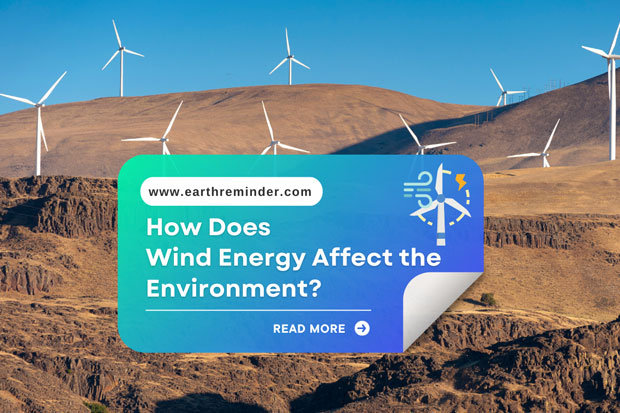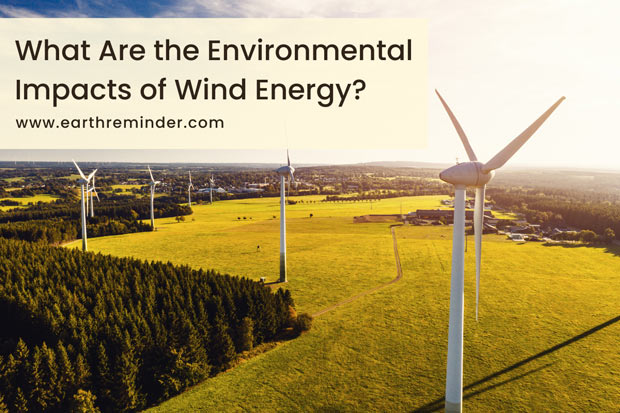How Does Wind Energy Affect the Environment Negatively?
Introduction: How Does Wind Energy Affect the Environment?
More than a thousand years have passed since the invention of wind power. It is one of the world’s most dependable sources of renewable energy. Wind energy has almost no emissions and is sustainable and safe for the environment. There are many benefits of energy production, but it has a minimal environmental impact as well. Wind energy produces fewer greenhouse gases than that generated by fossil fuels, which slows climate change.
So, let’s learn more in this article about how wind energy is harming the environment and the Earth.
Table of Contents
How Does Wind Energy Affect the Environment Negatively?
Wind energy produces power by spinning wind turbines without contaminating the air or the water. Through the use of rotor blades, these turbines transform mechanical energy into electrical energy. Aside from being affordable and usable, wind energy supports agriculture and rural economies.
If not adequately planned, it harms wildlife since turbines are noisy and unattractive. Additionally, since wind energy is a fluctuating energy source, it cannot be produced instantly. Wind energy can only be generated when the wind blows; it is not suitable as a base load energy source.
Here are a few of the factors on how wind energy is affecting the environment:
Local Wildlife
Wind energy production is mostly harmful to the local fauna because of noise pollution caused by turbines. It has been mentioned as a quality-of-life issue for nearby residents, like birds and bats.
Each year, anywhere from 140,000 to 500,000 birds die at wind farms, according to the U.S. Fish and Wildlife Service. Additionally, because most wind farms are built in rural locations, their construction might disturb the natural habitat. They may need a large amount of land to establish, posing a threat to species diversity and habitat fragmentation.
Land Use
Local disturbances may result from the wind turbine construction process. It often requires more area compared to hilly locations. Building underground electricity lines to reach more populated areas generally requires large amounts of space, significant upfront costs, and heavy equipment. As the majority of land farmers intend to cultivate crops around their wind turbines, this may cause disruptions.
It is possible to reduce land utilization by considering the concepts and industry standards when designing the setup. Many wind farms can be constructed on existing cleared land. On farmland, a wind turbine can be constructed together with hiking paths or as grazing land for livestock.
Shadow Flicker
Wind turbines make noise and change the appearance of the landscape. Because when the rotor blades cast shadows, the shadows flicker. It can be unsettling and disturbing for those who live close to the turbine. However, it can be reduced through the use of cutting-edge technology and the construction of updated models of smaller turbines.
What Are the Environmental Impacts of Wind Energy?
The key components of wind energy’s environmental effects are concrete foundations, access roads, electric wires to the land, and turbines. This harms both sustainable land use and the marine ecosystem.
Noise
Some people may have problems with wind turbine noise, especially in rural locations where there isn’t much background noise. As a result, a wind turbine operates at a sound level of roughly 43 decibels, which is comparable to a refrigerator running in the kitchen. However, new wind turbines tend to make less noise as technology advances.
The Impact on Flora and Fauna
There are a few key ways in which wind energy can hurt flora and fauna. One way is through the construction of wind turbines and associated infrastructure. According to several studies, construction has a severe impact on the environment, as well as the natural habitats of wildlife.
Another way wind energy can impact Flora and Fauna is through the actual operation of turbines (sound pollution). But once the phase is completed, the wind turbines may not have such a negative impact on the environment.
Wind Reliability
Unpredictable wind conditions can disrupt wind energy. As a result, they might not be cost-effective in some remote locations that are not windy enough. On average, wind turbines operate at about 35% capacity. As energy can only be generated when the wind blows, it mainly depends on wind speed.
It is therefore critical for cities and energy companies to have an additional source of energy in case the wind stops for an extended period of time. In addition, sometimes, a highly severe storm may cause harm to your wind turbines, particularly when they are struck by lightning.
Does Wind Energy Cause Pollution?
As we’ve seen, there are both advantages and disadvantages to using wind energy for environmental purposes. Although using wind turbines does not produce any greenhouse gas emissions. In comparison to other energy sources, it still has a relatively low environmental impact. A wind farm typically aids in lowering carbon emissions while not adding to pollution.
Many of the pollutants and emissions associated with wind energy are produced during turbine construction and manufacturing. As soon as they are built, they take up little ground space, restoring the habitat that was destroyed during construction.
Conclusion
Wind energy offers a tremendous potential impact on the environment. It is also true that all forms of energy production have this kind of negative impact, which is why wind farms are constantly building wind turbines, both on and offshore. While there are some downsides to large-scale wind farms, overall wind energy is a clean and renewable resource that can help us transition away from fossil fuels.
We hope that this article has given you some insights into how wind energy affects the environment. With proper planning and management, wind energy can play an important role in achieving a sustainable future.

